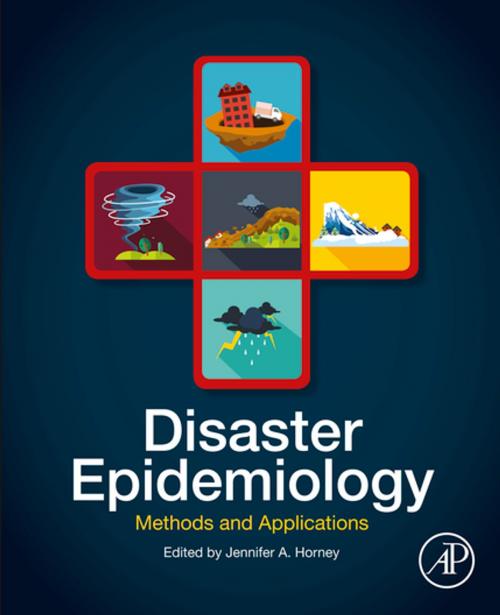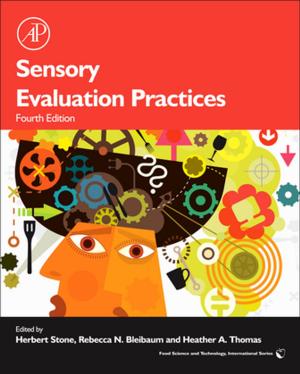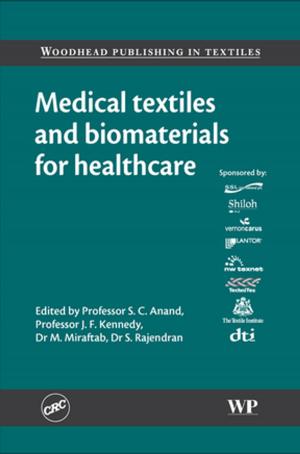Disaster Epidemiology
Methods and Applications
Nonfiction, Health & Well Being, Medical, Ailments & Diseases, Infectious Diseases, Epidemiology, Reference, Public Health| Author: | ISBN: | 9780128095072 | |
| Publisher: | Elsevier Science | Publication: | October 31, 2017 |
| Imprint: | Academic Press | Language: | English |
| Author: | |
| ISBN: | 9780128095072 |
| Publisher: | Elsevier Science |
| Publication: | October 31, 2017 |
| Imprint: | Academic Press |
| Language: | English |
Disaster Epidemiology: Methods and Applications applies the core methods of epidemiological research and practice to the assessment of the short- and long-term health effects of disasters. The persistent movement of people and economic development to regions vulnerable to natural disasters, as well as new vulnerabilities related to environmental, technological, and terrorism incidents, means that in spite of large global efforts to reduce the impacts and costs of disasters, average annual expenditures to fund rebuilding from catastrophic losses is rising faster than either population or the gross world product. Improving the resilience of individuals and communities to these natural and technological disasters, climate change, and other natural and manmade stressors is one of the grand challenges of the 21st century. This book provides a guide to disaster epidemiology methods, supported with applications from practice. It helps researchers, public health practitioners, and governmental policy makers to better quantify the impacts of disaster on the health of individuals and communities to enhance resilience to future disasters.
Disaster Epidemiology: Methods and Applications explains how public health surveillance, rapid assessments, and other epidemiologic studies can be conducted in the post-disaster setting to prevent injury, illness, or death; provide accurate and timely information for decisions makers; and improve prevention and mitigation strategies for future disasters. These methods can also be applied to the study of other types of public health emergencies, such as infectious outbreaks, emerging and re-emerging diseases, and refugee health. This book gives both the public health practitioner and researcher the tools they need to conduct epidemiological studies in a disaster setting and can be used as a reference or as part of a course.
- Provides a holistic perspective to epidemiology with an integration of academic and practical approaches
- Showcases the use of hands-on techniques and principles to solve real-world problems
- Includes contributions from both established and emerging scholars in the field of disaster epidemiology
Disaster Epidemiology: Methods and Applications applies the core methods of epidemiological research and practice to the assessment of the short- and long-term health effects of disasters. The persistent movement of people and economic development to regions vulnerable to natural disasters, as well as new vulnerabilities related to environmental, technological, and terrorism incidents, means that in spite of large global efforts to reduce the impacts and costs of disasters, average annual expenditures to fund rebuilding from catastrophic losses is rising faster than either population or the gross world product. Improving the resilience of individuals and communities to these natural and technological disasters, climate change, and other natural and manmade stressors is one of the grand challenges of the 21st century. This book provides a guide to disaster epidemiology methods, supported with applications from practice. It helps researchers, public health practitioners, and governmental policy makers to better quantify the impacts of disaster on the health of individuals and communities to enhance resilience to future disasters.
Disaster Epidemiology: Methods and Applications explains how public health surveillance, rapid assessments, and other epidemiologic studies can be conducted in the post-disaster setting to prevent injury, illness, or death; provide accurate and timely information for decisions makers; and improve prevention and mitigation strategies for future disasters. These methods can also be applied to the study of other types of public health emergencies, such as infectious outbreaks, emerging and re-emerging diseases, and refugee health. This book gives both the public health practitioner and researcher the tools they need to conduct epidemiological studies in a disaster setting and can be used as a reference or as part of a course.
- Provides a holistic perspective to epidemiology with an integration of academic and practical approaches
- Showcases the use of hands-on techniques and principles to solve real-world problems
- Includes contributions from both established and emerging scholars in the field of disaster epidemiology















